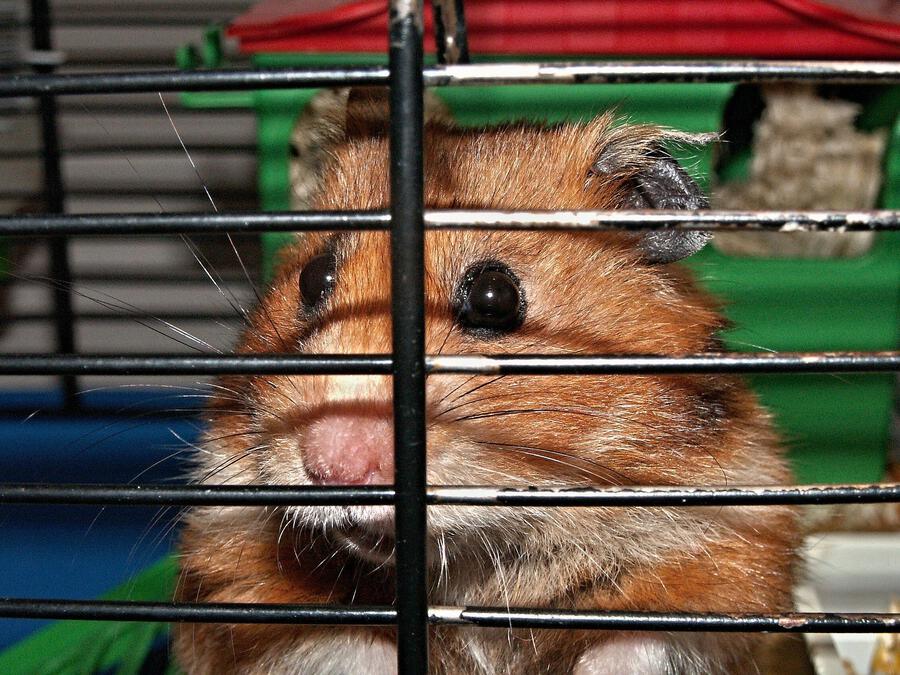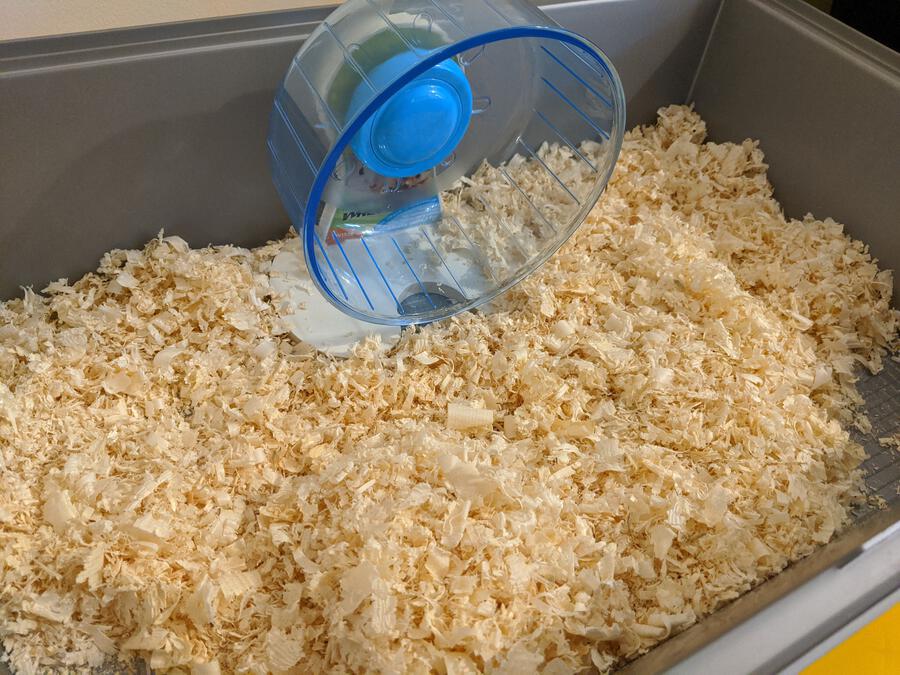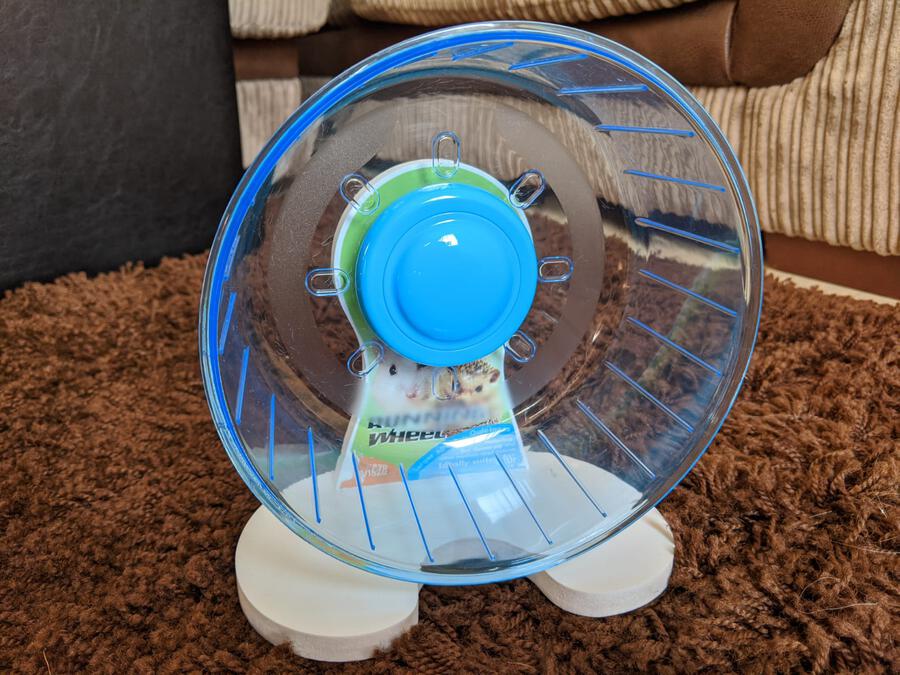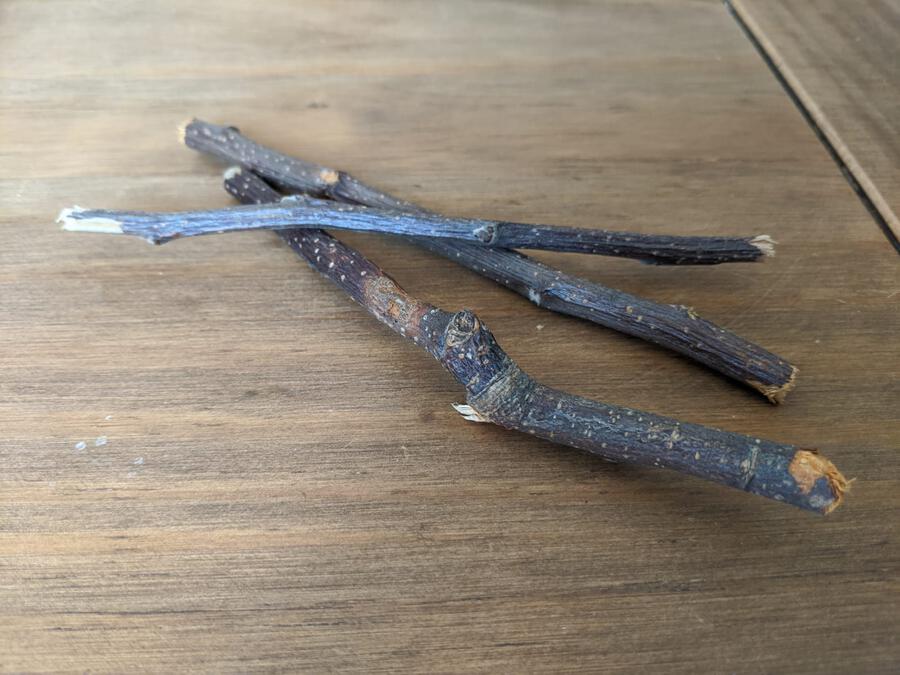Many people make mistakes when it comes to looking after hamsters but generally those mistakes are made due to lack of research, which is a mistake in itself, especially if the hamster was impulse bought.
But this may not be intentional. For instance you may have received a hamster as a gift and therefore had to resort to receiving advice from the pet store employee or a friend.
Chances are this advice will either been incorrect or outdated.
As a rule of thumb, it’s a good idea not to take advice from a pet shop. Many people do, including myself, which looking back, was a mistake.
The reason being is that hamster care is continually evolving and chances are pet shops are not keeping up with current advice and research.
I came across a saying from a well-known hamster YouTuber who said that “you wouldn’t go into a food store and ask for dieting advice so why would you go into a pet store and ask for pet care advice”.
I love this saying and I think it’s very true. I don’t necessarily think that every pet shop offers bad advice, but the vast majority of them don’t have the welfare of your hamster at the forefront of their minds.
So let’s talk about mistakes.
Everyone makes mistakes and they’re absolutely fine to make, however the most important thing is that we take action and change the way we do things.
In my opinion the difference between a good pet owner and a bad one is that often bad pet owners realise that they have made a mistake but continue to make those mistakes, often refusing to change how they care for their pets.
Good pet owners on the other hand acknowledge their mistakes and fix the issue there and then or at least have a plan in place to solve the problem.
With that in mind let’s look at some of the mistakes that hamster owners make so you don’t have to.
Table of Contents
Mistake 1: Keeping Your Hamster In A cage Which Is Too small
Most new hamster owners don’t realise that hamsters need quite a lot of floor space.
In the wild hamsters have been known to run about 5 1/2 miles in a night either exploring or foraging for food to stuff into their cheeks.
So just because your hamster is tiny, this doesn’t mean that they should be housed in a tiny cage.
One of the reasons why people buy small cages is because most of the cages available in the pet store are too small. Often these cages are visually appealing (especially to children) as they look cute and are full of fun colours, lights and have lots of extras on them.
Parents almost buy them as toys for their kids.
The minimum size cage you should be going for is one that has a minimum of 450 square inches of floor space. But even this is quite small.

When I went to the pet shop to buy a cage for our hamster, the pet shop employee was almost surprised as to why we needed a cage bigger than what they were offering.
So this is another example of not taking pet shop advice. Bigger is always better when it comes to hamster cages and you should go as big as your budget will allow.
To get the floorspace of your hamster cage in square inches, simply multiply the length and the width together and that’s your answer.
The best hamster cages are aquariums, however they can be very expensive.
Instead, you could make a large enough cage out of plastic storage bins. Check out the video below on how you can do this cheaply.
Mistake 2: Not Providing enough bedding
When it comes to hamster bedding or substrate, many hamster owners only use enough to cover the floor space of their cage.
Small cages are partly to blame for this because the bases of the cages sold in pet stores are not very deep at all, and some of them are only about three inches deep.
Many hamster owners don’t realise that hamsters are burrowers because they are prey animals.
In the wild, hamsters burrow down beneath the ground in tunnels where it is safe for them to sleep and eat during the day and only return to the surface at night when it is free of predators.
Even though hamsters are domesticated, they still have this burrowing instinct inside them and therefore need enough substrate to burrow deep.
I recommend that your cage has at least 2-3 inches of substrate along the bottom with one section of your cage having at least 6 inches of substrate.
Some recommend even 10 inches in which gives them plenty of room to burrow.

Mistake 3: Using Unsafe hamster products
Unfortunately not all of the products on sale are safe for your hamster despite being labelled ‘safe’.
Often people buy products because their pet store has recommended them but some of them can be very dangerous. Here are some of the products that should be avoided at all costs:
- Wire mesh wheels. These can be very dangerous and can cause injuries to your hamster’s limbs. They can also cause a condition known as Bumblefoot which is basically inflammation of the foot. You can read more about bumblefoot in rodents here.
- Cotton fluff nesting. Any type of cotton is very dangerous for hamsters so please don’t use it for your hamster’s nesting material. Cotton can get wrapped around your hamster’s teeth, cut off circulation to their limbs and if ingested can cause blockages.
- Pine and Cedar wood shavings. These are dangerous products which are widely available in pet shops. I was definitely guilty of this mistake in the beginning. Pine and Cedar shavings basically contain toxic phenols and acids which your hamster will then inhale. This can cause respiratory infections and can be hugely damaging for your hamsters health.
- Scented bedding. This is another dangerous product to stay away from. Hamsters have an extreme sense of smell so it would be the equivalent of your hamster living in a perfume factory! In addition, by having a prolonged exposure to artificial scents, your hamster is at risk of developing respiratory problems.
Mistake 4: Bathing your hamster (in water)
Bathing your hamster in water should be avoided at all costs unless you have been advised to do so by a vet.
If you were to bathe your hamster using soap and water you are going to remove a lot of the important and protective oils from your hamster coat.
Also, if you do not dry your hamster properly they can get too cold and go into shock and potentially die.
Hamsters are naturally very clean animals and are constantly grooming themselves to keep their coats nice and clean (a bit like cats do).
If you really want to help your hamster bathe, then you can give them a sand bath. Check out the video below on how best to do this.
Mistake 5: Housing a male and female hamsters together
Another big mistake that people make is housing male and female hamsters together. This is because they will reproduce.
Some owners think that if you put a brother and a sister hamster together they won’t want to breed. But this simply isn’t true.
Hamsters don’t have the same morals of inbreeding as humans do, so the fact that male and female hamsters are together will mean that they will want to breed.
Hamsters are solitary animals and should be housed by themselves.
Mistake 6: Not having a vet budget
Many people think that just because hamsters are small they don’t need to be seen by a vet. Hamsters deserve vet care if and when they need it.
If your hamster is unwell, don’t let them sit there and suffer, they’re a living, breathing creature with value to its life just like ours.
Hamsters are not simply a disposable pet where you can go out and buy a new one.
If you don’t take your hamster to the vet when it needs to, they could get sick, experience pain and suffering and die.
This is cruel and inhumane at best. To avoid this simply save up a couple of dollars every month for your vet. You can even get pet insurance.
Mistake 7: Leaving the cage open
I’ve been guilty of this mistake once or twice and had a couple of near misses.
Leaving the cage open is often when you get distracted whilst cleaning or in my case, forgetting to close it after topping up the hamster’s food and water.
The obvious dangers here are that they could get injured by falling whilst trying to get out of their cage or you could potentially lose your hamster forever.
Remember hamsters are extremely good at squeezing into small, tight spaces.
One tip is to open a door on the cage which, if left open, your hamster has no chance of climbing out of.
I now open the door on the roof of the cage when topping up Richmond’s food and water, to prevent him escaping.

Mistake 8: Using The Wrong sized hamster wheel
If you have a baby hamster, then chances are, the wheel that you bought or the one that came as part of the cage is big enough.
However hamsters grow very quickly and you will soon find that your wheel is no longer big enough for your hamster.
Hamster wheels that are too small can cause your hamster’s back to arch when they’re exercising on it, which could cause them to injure themselves.
Syrians especially need a larger wheel when they get bigger.
I recommend at least an 8-inch wheel for Syrians or a 6 and 1/2 inch wheel for a dwarf hamster. This 12 inch wheel on Amazon is ideal (#CommissionsEarned).
Of course it does depend on how big your hamster is.

Mistake 9: Keeping Syrians together
Not only should you not put male and female hamsters together in the cage, you should definitely not keep more than one Syrian hamster in your cage at any one time.
Syrian hamsters are territorial and solitary animals. If you have more than one together inside a cage, they can fight.
Also, if you try to separate them, it is likely that you will get bitten. You should never mix different species of hamster together either; they can’t live together.
You may get away with two Dwarf or Roborovski hamsters living together in the same cage, but only if they get along.
Try to avoid modular or leveled cages when you have pairs of hamsters living together because this can cause a lot of territorial issues.
Mistake 10: Waking your hamster during the day
Never wake your hamster up during the day unless they need to go to the vet or if need to clean out their cage.
In the latter case it is best to start cleaning the cage and let them wake up by themselves.
Hamsters alternate between being nocturnal and crepuscular, so you’ll find them to be asleep during the day.
Waking your hamster up during the day just because it’s convenient for yourself is not fair to your hamster. It’s the equivalent of a child waking you up in the middle of the night and wanting to play.
Mistake 11: Clawing your hamster
Never pick up your hamster with one hand like an arcade claw machine.
Your hamster will think prey is coming down to eat them and will stress and scare them. This will likely result in you being bitten.
You may get away with this if your hamster can see your hand coming and is used to you, but definitely don’t do this in the beginning.
The best way to pick up your hamster is to put both of your hands underneath your hamster’s belly and scoop them up.
Mistake 12: Bad diet/too many treats
You should always make sure that you feed your hamster a healthy balanced diet.
Your hamster’s diet should mainly consist of good quality hamster mix (Amazon, #CommissionsEarned), which contains all the nutrients that your hamster needs.
Don’t simply go with a cheap hamster mix that you got from your local pet shop.
Many people also give their hamster too many treats which can either lead to obesity and diabetes or it can upset their stomach and potentially cause diarrhea, which can lead to dehydration.
It’s important that you do give your hamster treats, but only in moderation, like a sliver of apple once or twice a week.
However, you need to avoid foods that are acidic such as citrus fruits and any foods which are sharp or that can get stuck in your hamsters cheeks.

Mistake 13: Buying your hamster cage and hamster on the same day
I’m definitely guilty of this one. We bought our hamster, bedding, cage, food, water bottle, wheel etc all in one day.
In hindsight it would have been much easier for us and less stressful for the hamster if we had bought and set up the cage prior to buying the hamster.
That way, when you bring your hamster home, it can go straight into its new cage and get used to its new surroundings immediately rather than waiting for the cage to be set up in the box that it was transported in.
Mistake 14: Handling Your hamster at height
When handling your hamster it’s always best to sit down as close to the floor as possible so that if it does fall, it won’t have as far to fall and is less likely to get injured.
Mistake 15: Handling your hamster immediately
Getting a new hamster is an exciting time for you but an extremely stressful time for your hamster.
When your hamster comes home it’s important that they have time to settle in and gain your trust. If you start to hold your hamster straight away, they will be frightened and it is likely that you will get bitten.
Our hamster Richmond started hissing when we first brought him home which was his way of telling us to leave him alone.
Once we had him settled in his new cage we didn’t try to interact with him for the first two to three days. This allowed him enough time to get used to his new surroundings.
Mistake 16: Not providing chews and chew toys
One of the mistakes that I made was not providing enough chews and chew toys for our hamster Richmond.
Although he did have a few things to chew on inside his cage like a wooden log and a wooden bridge, he rarely chews on them and so we have recently bought him some apple sticks from Amazon (#CommissionsEarned).
It’s very important that hamsters have things that they can chew on to help keep their continually growing teeth nice and trim.

Mistake 17: Poking your finger in your hamster’s housing
This was a rookie mistake which I made when we first got a hamster and one which I will never make again!
I was poking my finger around inside our hamster’s house when Richmond was sleeping in an attempt to wake him, to clean out his cage.
Needless to say I got bitten. You can click here to find out what that hamster bite felt like.
Hamsters bite either because they are frightened or because they think your finger is food.
This goes back to a mistake number nine and waking your hamster during the day.
If it’s absolutely necessary to wake your hamster during the day, try to wake them gently and let them come out of their nesting area on their own.
Also when handling your hamster it’s a good idea to wash your hands first to prevent your hamster mistaking your fingers for food.
Wrapping Up
Hopefully by reading some of these mistakes you’ll avoid some of the common pitfalls that many new hamster owners make.
If you do end up making mistakes, don’t beat yourself up about it, the most important thing is that you learn from the mistakes and correct them and that’s what being a good pet owner is all about.
You certainly can’t expect to learn everything about hamster care overnight, rather it’s a continuous learning process.
